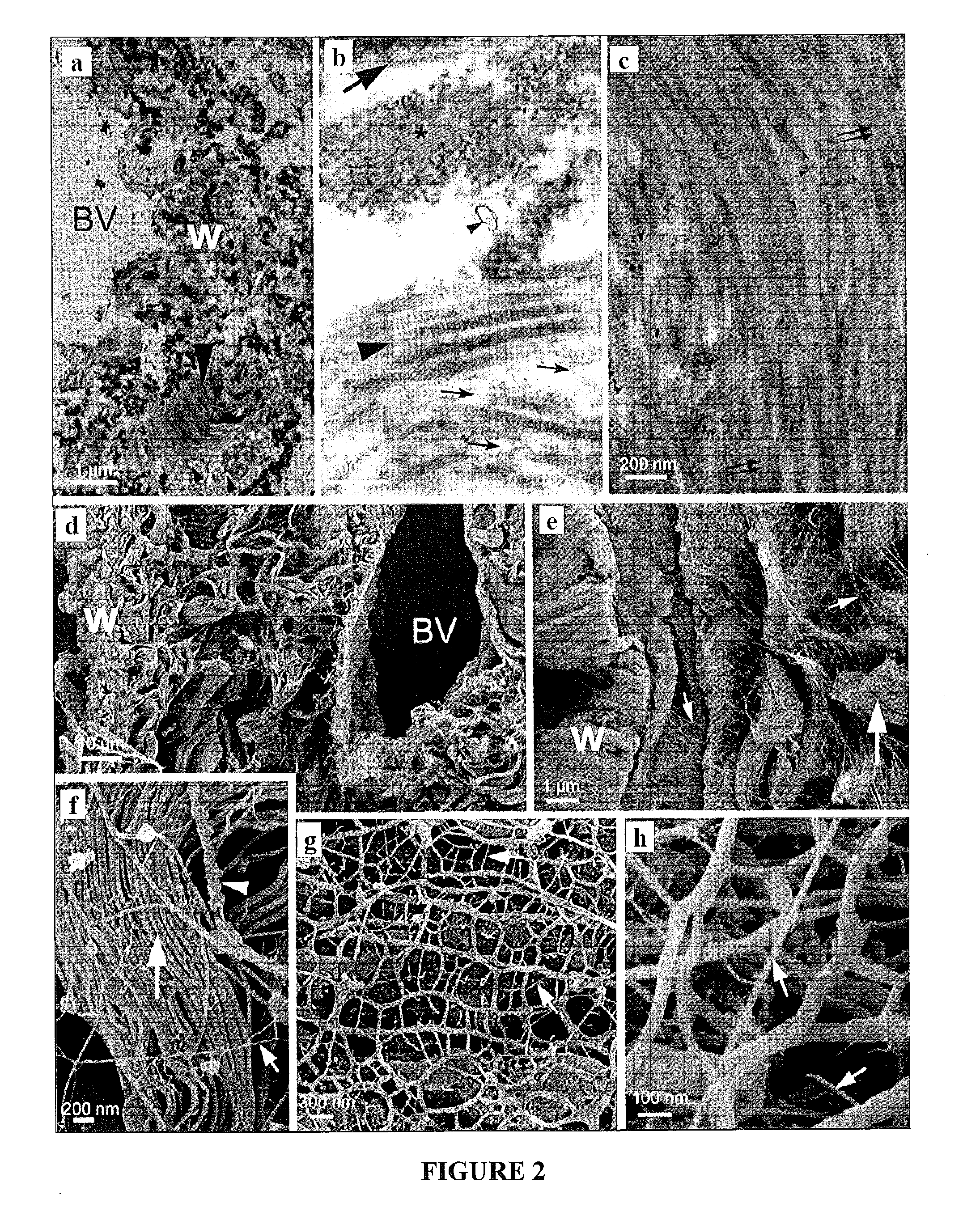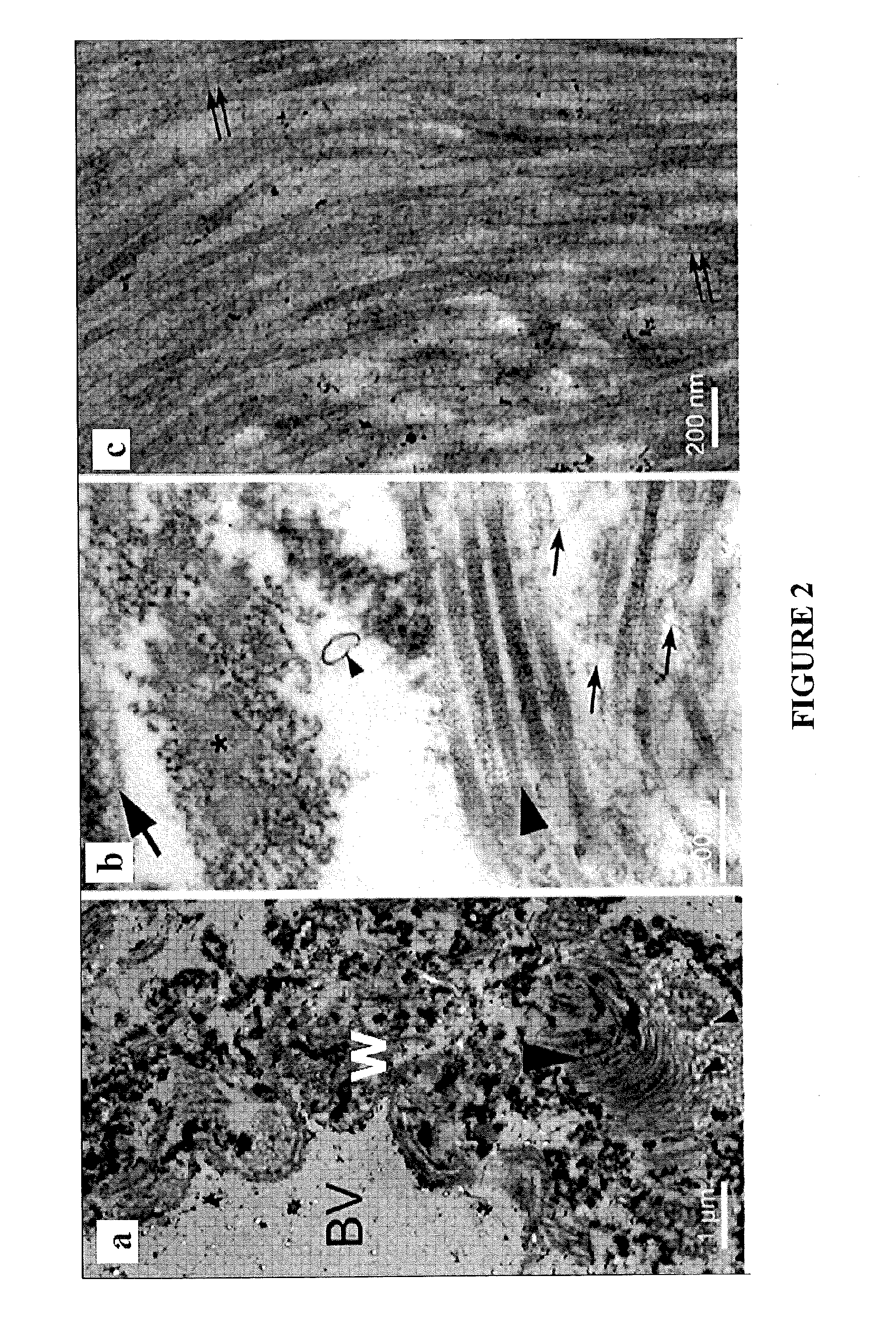Biomatrix Scaffolds
a biomatrix and scaffold technology, applied in the field of biomatrix scaffolds, can solve the problems of major loss of some matrix components, inability to recapitulate the complex matrix chemistry and architecture of tissue, etc., and achieve the effects of good attachment, improved quality of cryopreserved cells, and higher levels of p450s
- Summary
- Abstract
- Description
- Claims
- Application Information
AI Technical Summary
Benefits of technology
Problems solved by technology
Method used
Image
Examples
example 1
REFERENCES FOR EXAMPLE 1
[0187]1. Lanza, R. et al. Handbook of Stem Cells, Vol. 2 volumes. (Elsevier Academic Press, New York City; 2004).[0188]2. Vacanti, J. P. & Langer, R. Tissue engineering: the design and fabrication of living replacement devices for surgical reconstruction and transplantation. Lancet 354 Suppl 1, SI32-34 (1999).[0189]3. * Schmelzer, E. et al. Human hepatic stem cells from fetal and postnatal donors. Journal of Experimental Medicine 204, 1973-1987 [*co-equal first authors; **co-equal senior authors] (2007).[0190]4. Zhang, L., Theise, N., Chua, M. & Reid, L. M. Human hepatic stem cells and hepatoblasts: Symmetry between Liver Development and Liver Regeneration. Hepatology 48, 1598-1607 (2008).[0191]5. Kubota, H. & Reid, L. M. Clonogenic hepatoblasts, common precursors for hepatocytic and biliary lineages, are lacking classical major histocompatibility complex class I antigens. Proceedings of the National Academy of Sciences of the United States of America 97, 121...
example 2
Use of Biomatrix Scaffolds for Cultures of Tumor Cell Lines or Primary Cultures of Tumors
[0239]The biomatrix scaffolds of this invention can be used for producing cultures of tumor cell lines or of primary cultures of tumors. The ability to do this means that a patient's tumor can be assessed for sensitivity to various therapies in an ex vivo assay.
[0240]The biomatrix scaffolds of this invention can also be used as substrata for grafts of tumors (whether syngeneic, allogeneic, or xenogenic) transplanted into hosts.
[0241]The biomatrix scaffolds of this invention can also be used to assess the metastatic potential of a tumor. Tumor cells are seeded at low cell densities onto substrata of biomatrix scaffolds from various tissues. The tumor cells will attach and survive on many types of biomatrix scaffolds. They will grow and form colonies preferentially on some of them. Their ability to form colonies on a specific type of biomatrix scaffold is predictive of the tumor cells' ability to ...
PUM
| Property | Measurement | Unit |
|---|---|---|
| osmolality | aaaaa | aaaaa |
| time | aaaaa | aaaaa |
| time | aaaaa | aaaaa |
Abstract
Description
Claims
Application Information
 Login to View More
Login to View More - R&D
- Intellectual Property
- Life Sciences
- Materials
- Tech Scout
- Unparalleled Data Quality
- Higher Quality Content
- 60% Fewer Hallucinations
Browse by: Latest US Patents, China's latest patents, Technical Efficacy Thesaurus, Application Domain, Technology Topic, Popular Technical Reports.
© 2025 PatSnap. All rights reserved.Legal|Privacy policy|Modern Slavery Act Transparency Statement|Sitemap|About US| Contact US: help@patsnap.com



